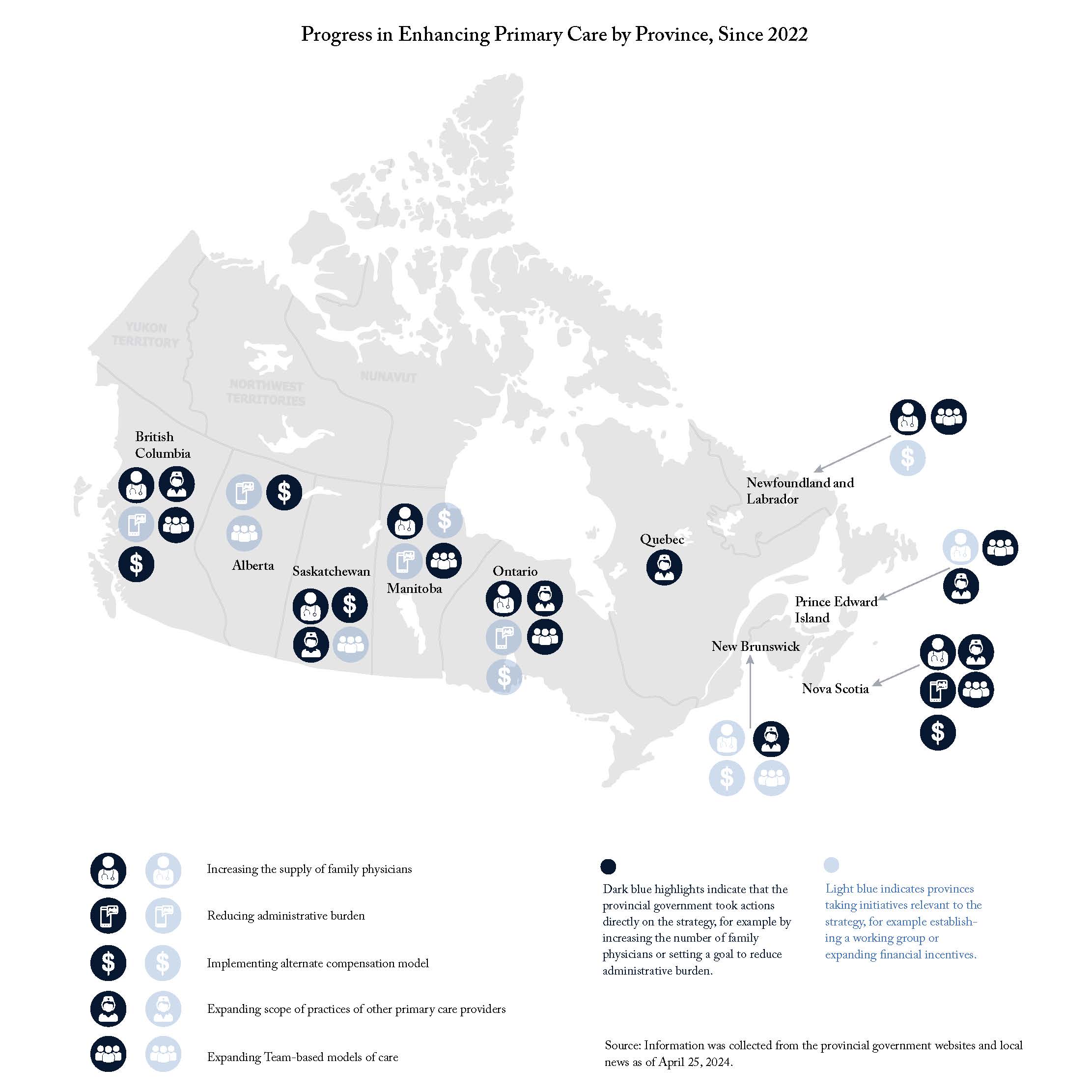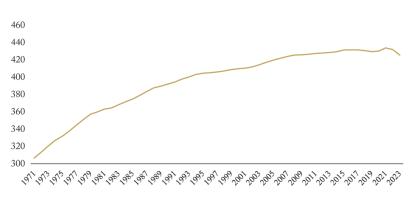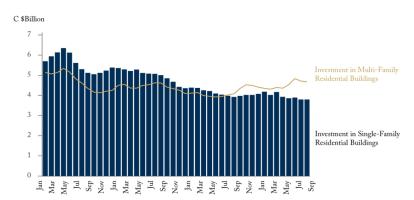The lack of access to family physicians in Canada is a critical issue affecting millions of Canadians, and provinces are all moving to address it.
This Graphic Intelligence illustrates primary care initiatives and actions taken by various provinces since 2022 in pursuit of five well-established approaches: increasing supply of family physicians; reducing administrative burdens; implementing alternative compensation models; expanding the scope of practice for other primary care providers; and expanding team-based models. Dark blue icons highlight provinces that have directly taken actions on a strategy, while light blue icons indicate those undertaking relevant initiatives.
Overall, these initiatives are growing – with B.C., Nova Scotia and Ontario in the lead. Nova Scotia stands out as the only province moving on all fronts. Conversely, Quebec has only implemented one strategy. This may become problematic since it has more senior family physicians than young ones.
Ongoing measurement and evaluation of these initiatives is important, particularly with clearly defined outcome indicators, such as the percentage of people attached to primary care. While most provinces are expanding team-based care, its productivity and administrative efficiency also need to be evaluated. Governments also need to support family physicians while holding them accountable for system-wide goals to facilitate improvement over time.
For more information about the comparison results and Canada’s primary care crisis, read The Doctor Dilemma: Improving Primary Care Access in Canada.





